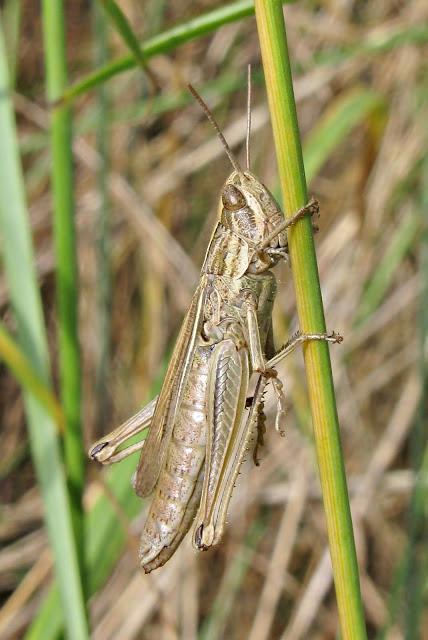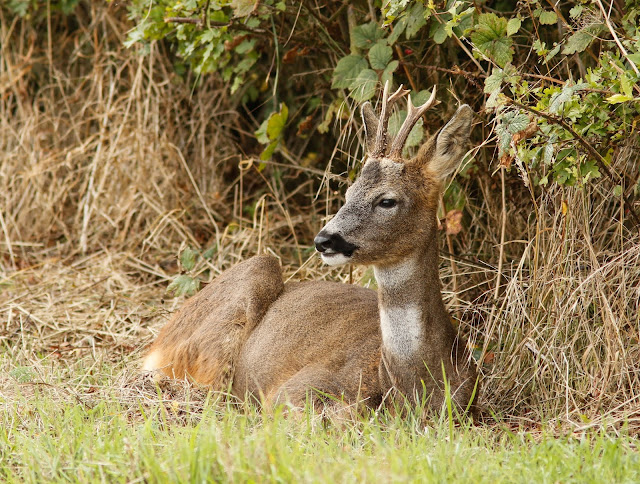In 2017 i heard with understandable excitement that a new wetland area was to be created between Winter's Pond and East Halton Skitter on my local birding patch at East Halton on the banks of the Humber Estuary in North Lincolnshire.
The area is being created for mitigation in replacing lost habitat elsewhere on the Estuary due to industrial developments and in turn loss of habitat for mainly,wading birds.
So began the work by contractors on behalf of Able UK and all the hedges were removed and then a series of interlinking shallow channels excavated in the ground to collect rain water and then in turn flood the surrounding area in the hope this would provide breeding and roosting habitat for waders and also wildfowl.
Unfortunately the creation of this area has had mixed success,with lack of proactive management and at times very little water being on the site and also the vegetaion which has grown up,being far too high for waders or wildfowl to take advantage of the feeding areas.
All is not bad though,as this winter has seen a substantial flock of sheep introduced to the site and this in turn has created some great conditions along with the large amount of rain causing flooding and in turn making great feeding conditions for several wader species which included a flock of 500 Dunlin,2000 Lapwing,300 Golden Plover and smaller numbers of Curlew,Redshank and even Turnstone.
The area has also attracted some decent numbers of passerines,with flocks of Linnet,Goldfinch and smaller numbers of Reed Buntings being present and we have also had some large numbers of winter Thrushes visiting the site,particularly Fieldfare,plundering the remaining Hawthorn Hedgerows for the abundant berry crop.
Another couple of rarer visitors to the site have included Water Pipit and Waxwing.
Raptors have found the site particularly good for hunting with regular Marsh Harrier,Kestrel,Common Buzzard and Sparrowhawk sightings,with Peregrines also becoming a more regular sight also.
Rarer raptors have included Hen Harrier,Merlin and Red Kite.
Those close relatives of Raptors,Owls,have proved regular visitors,with sightings of hunting Barn Owls on most days and also in most winters,we also have the lovely Short-eared Owl also using the site,visiting us mainly from Scandinavia.
Up to the time of writing a total of 20 species of waders have been recorded on the site by myself,which have included such niceities as Wood Sandpiper,Avocet,Greenshank,Whimbrel and Ruff.
Wildfowl visitors have included regular Whooper Swan visits in both autumn/winter and spring periods and large flocks of the wintering Pink-footed Geese from their roost sites on the estuary,make regular flights over and sometimes onto the site.
The rarest wildfowl visitor so far has been 2 Russian White-fronted Geese seen with the regular,local Greylag Goose flock on 5th January 2020.
The rarest visitor observed on the site so far,occurred on the 3rd April 2018,when i discovered a singing male White-spotted Bluethroat singing in a reed filled ditch on the very southern edge of the area.The bird showed on and off for the whole of that day,but was gone on the next.This species is a breeding bird as close as the Netherlands in Europe and will have been blown off course on its migration there,from North East Africa were this species spends the winter months.
As a whole the site has proved attractive to the Chat family,of which Bluethroat is a member along with our commoner Robin and other species observed have included regular Wheatear,Redstart(1 female,11th September 2020),Whinchat(14 on the 23rd August 2020),Stonechat(8 on the 7th October 2020) and a female Black Redstart on 16th March 2020.
In all i have recorded a total of 126 species of birds so far on and over the site,which is pretty good in 3 years.
The site has also proved attractive to mammals,with particularly Roe Deer being seen on a regular basis along with occasional Fox and Brown Hare sightings,with lots of Badger prints being found all over the place,but i'm still yet to see one in the flesh.
Insects have included a profusion of interesting species which have included Lesser-marsh Grasshopper,Roesel's-bush Cricket,Emperor and Southern-hawker Dragonflies and at least 11 species of Butterfly.
 |
| Male Roesel's-bush Cricket. |
 |
| Lesser-marsh Grasshopper. |
 |
| Male Emperor Dragonfly. |
 |
| Peacock Butterfly. |
 |
| Buck Roe Deer. |
 |
| Juvenile Whinchat,With A Reed Bunting. |
 |
| Male Stonechat. |








